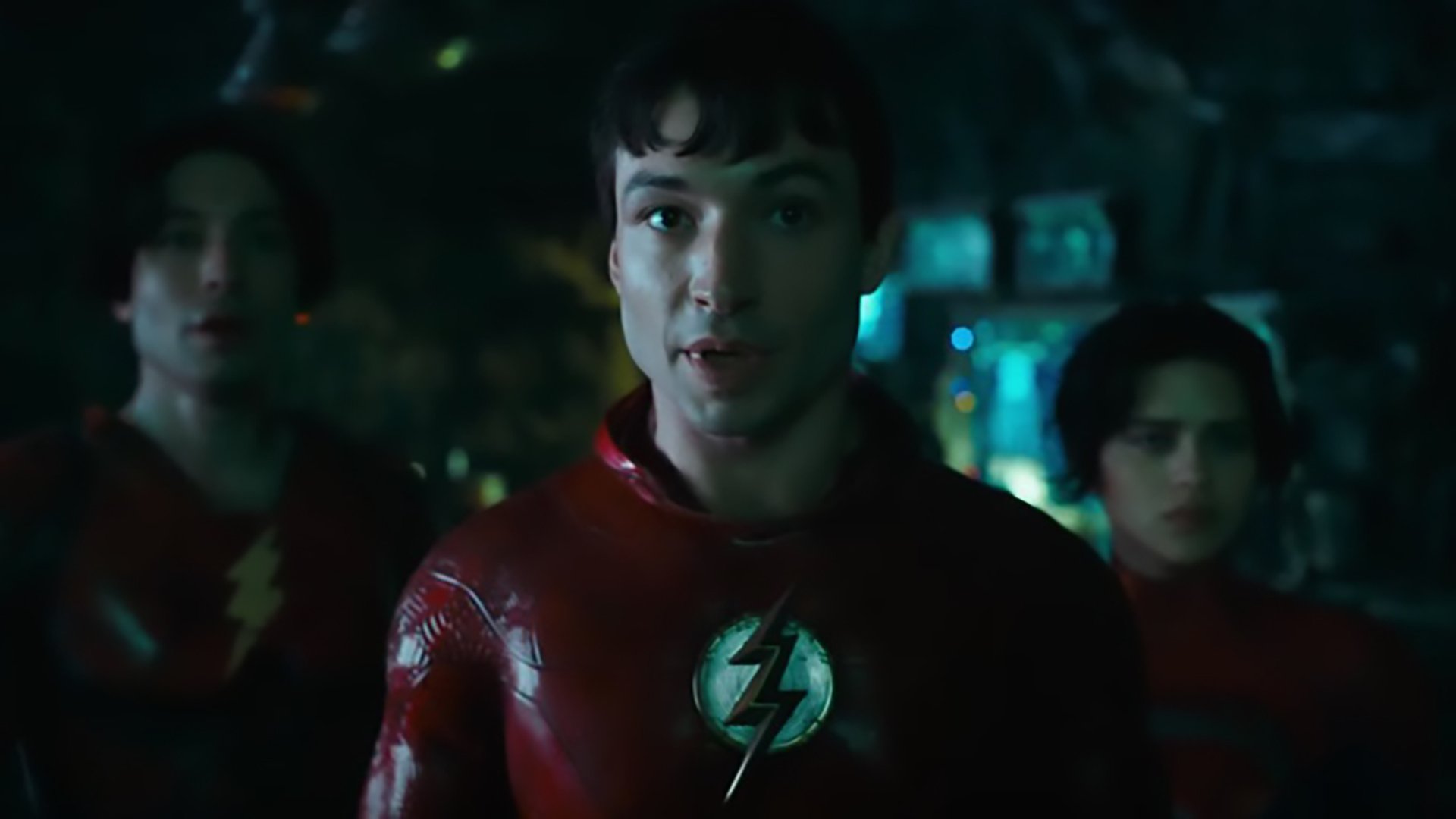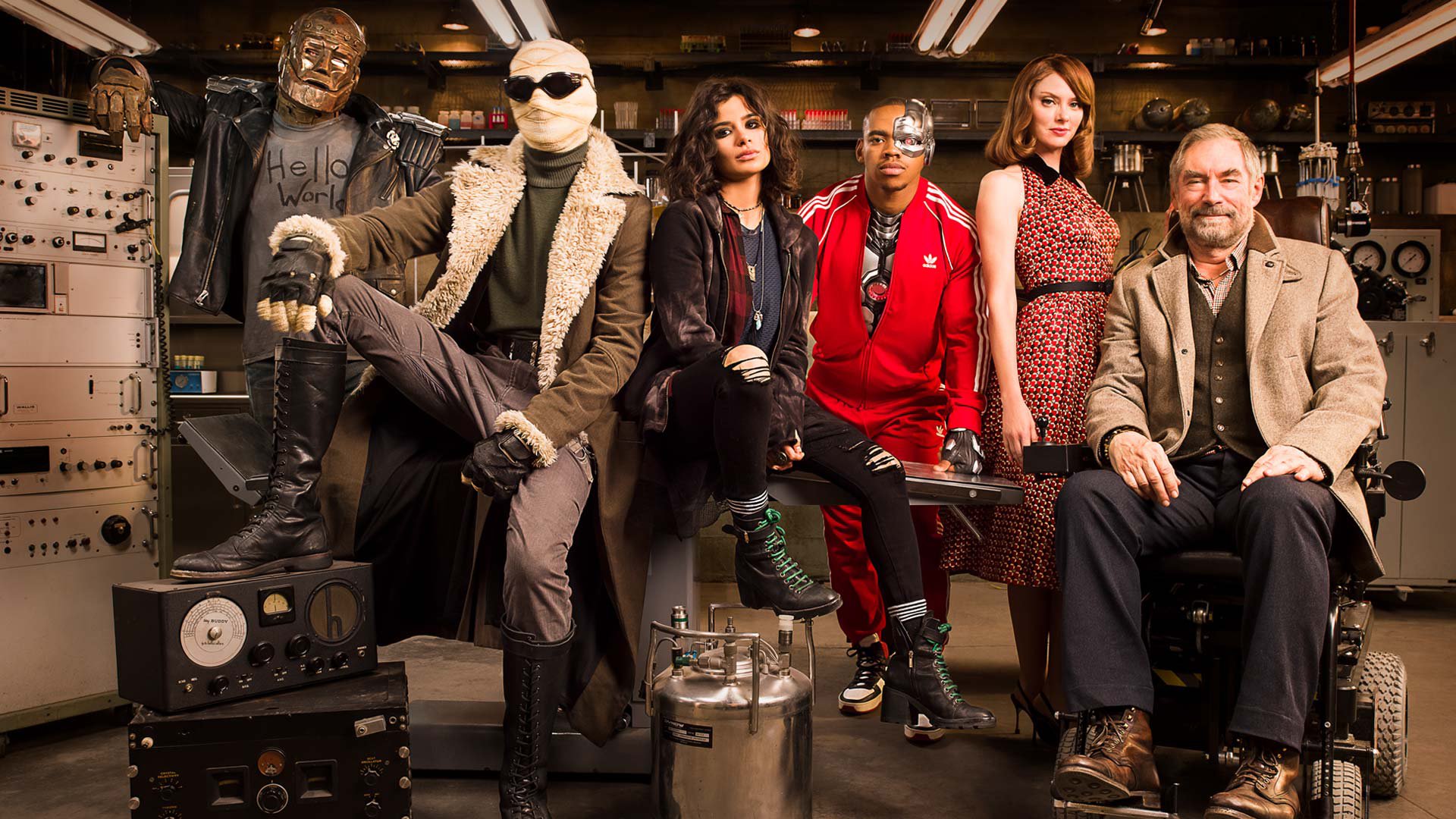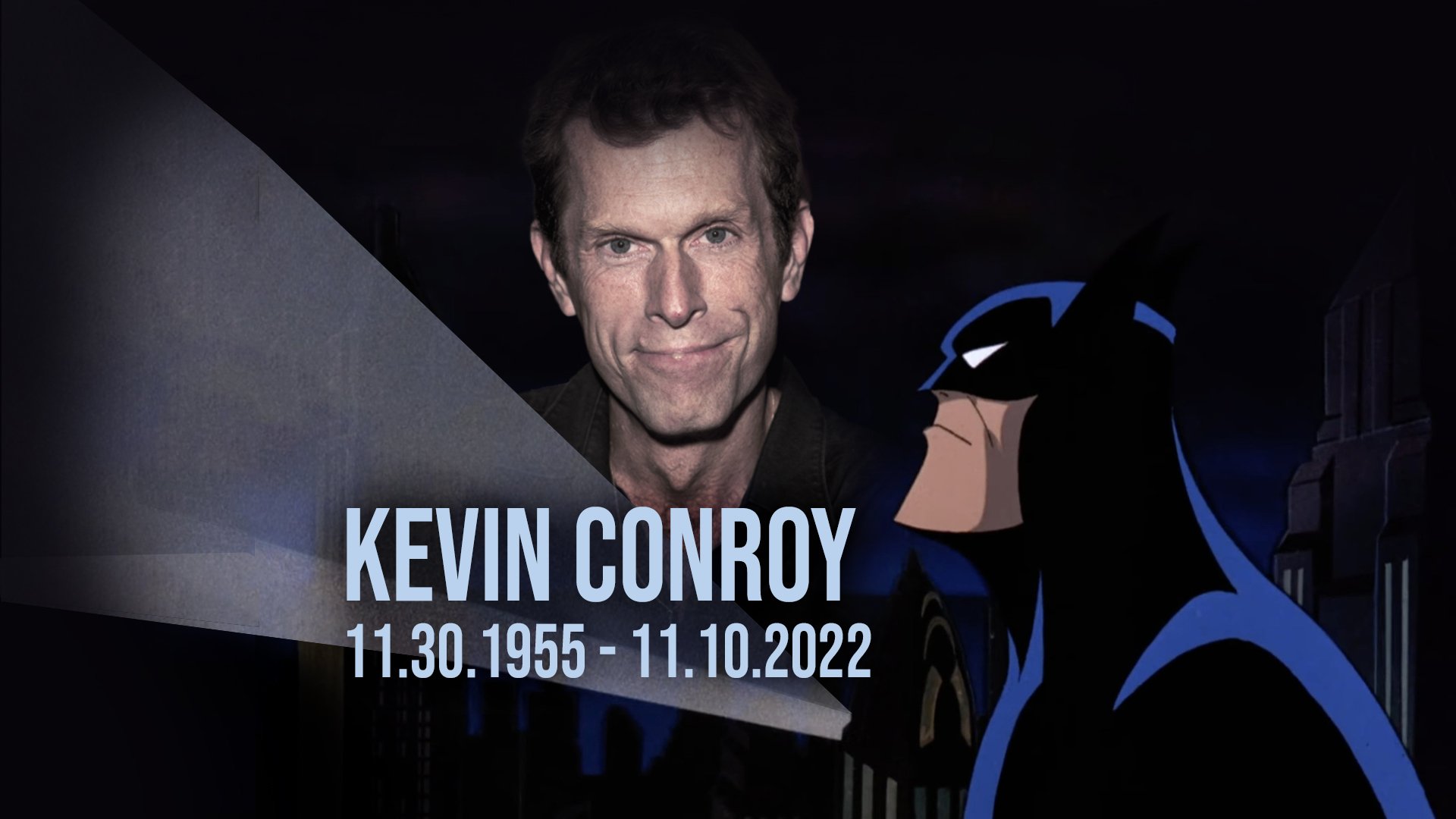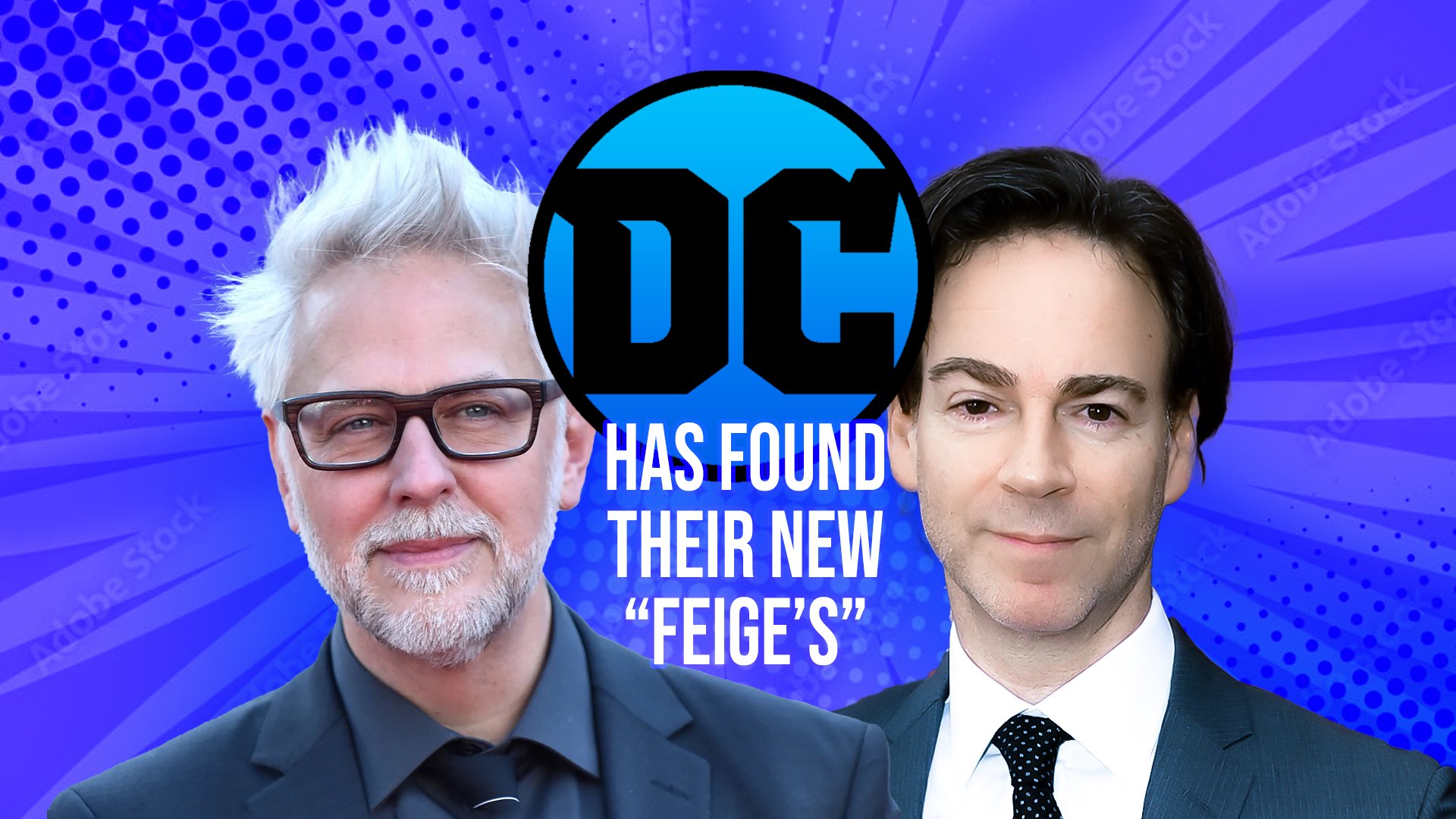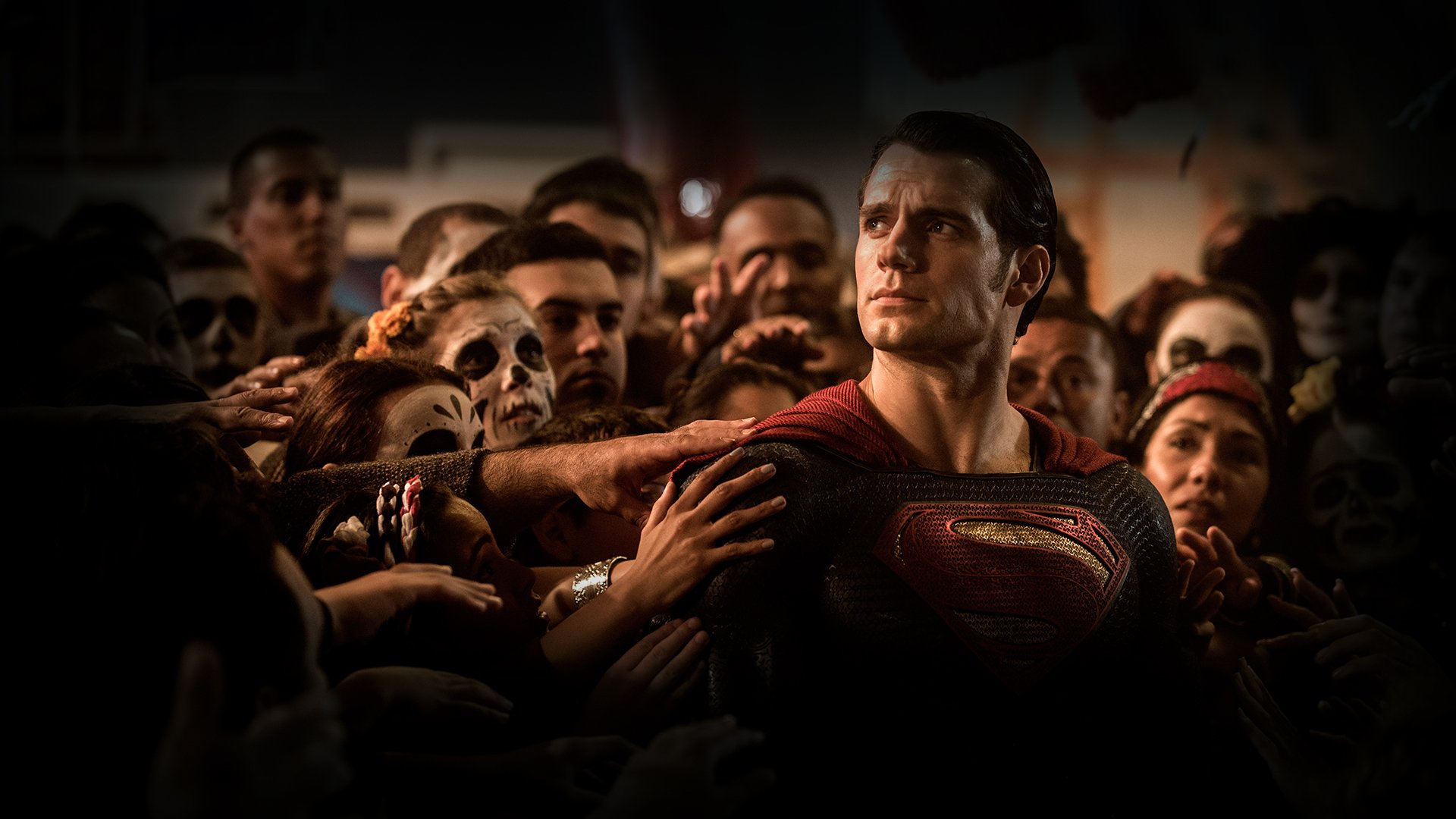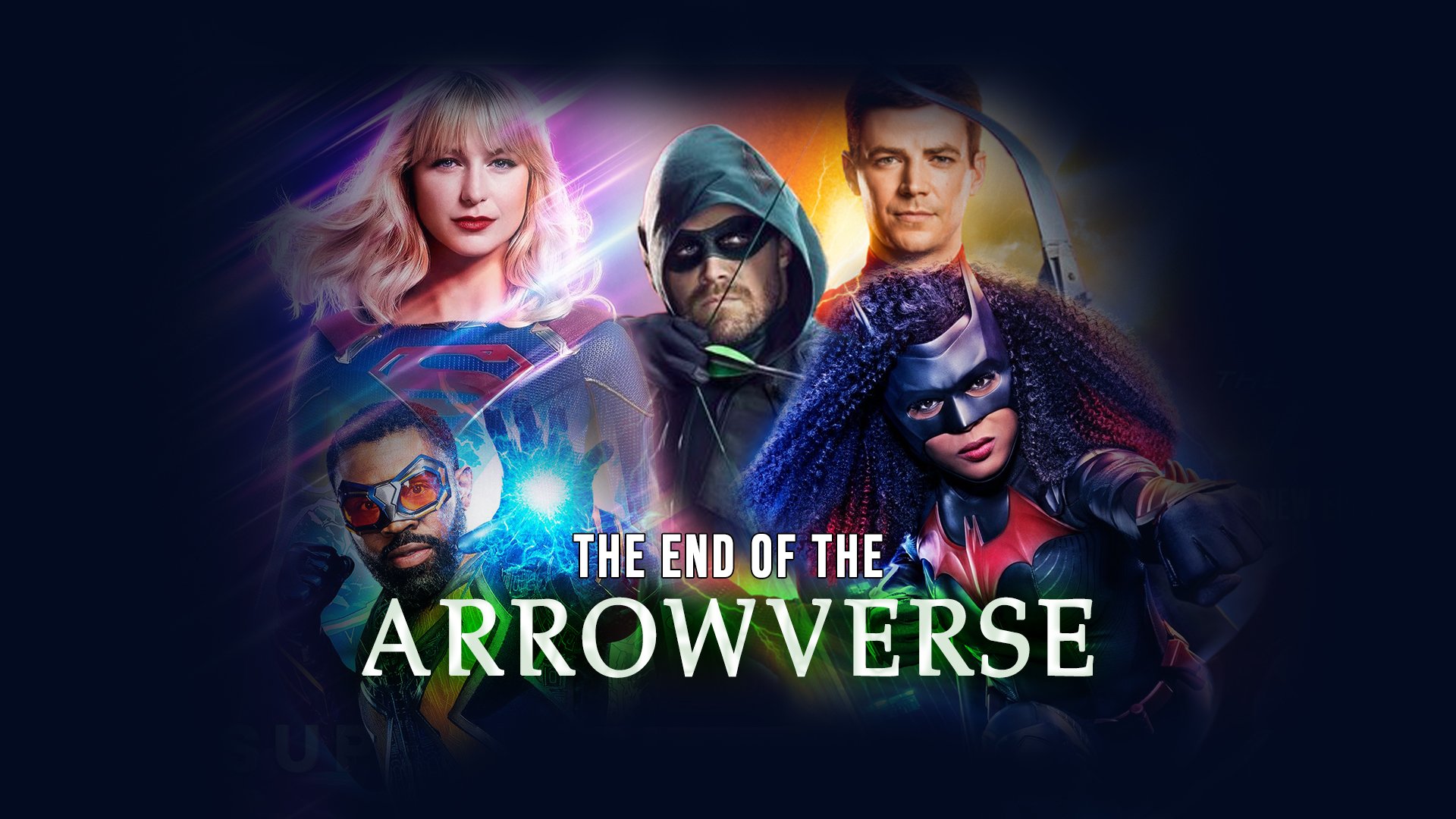By Brandon T. McClure
For 17 years, Warner Bros. Animation and DC Entertainment have been releasing successful direct-to-video animated films through an imprint known as DC Animated Original Movies. These films were based on some of DC’s most iconic characters and comics. In 2020 they released Superman: Man of Tomorrow, a new adaptation of Superman’s origins that launched what would become known as the Tomorrowverse. Meant as a fresh start for the line of movies, the Tomorrowverse laid the groundwork for a new and unique take on DC’s most iconic characters. But after only four years, the Tomorrowverse is coming to an end, and it’s possible this may signal the end of the DC Animated Original Movies.
In 2007, Warner Bros. and DC Entertainment launched the DC Animated Original Movies line with the launch of Superman: Doomsday, a trimmed-down adaptation of The Death of Superman and The Return of Superman. The goal of this new line of films was to appeal to a more adult audience, often getting “PG-13” (and sometimes “R”) ratings and allowing for more faithful adaptations. With this new line of films animators, writers, and directors, could adapt comic storylines more faithfully than live-action films and shows, and represent the various art styles of the adapted comics. Many popular films came from this line including Justice League: Doom (which saw the return of many cast members of the Justice League animated show), All-Star Superman, Superman vs. The Elite, and many more. Save for a few exceptions, each film was a standalone movie, unconnected to any larger storyline. But that changed in 2013 with the release of Justice League: The Flashpoint Paradox and the start of the DCAMU.
Bruce Timm has been working exclusively with DC Animation since 1993 and was one of the major producers of the DC Animated Original Movies. He wanted to take a step back to focus on Green Lantern: The Animated Series, so James Tucker came on board to produce the next film, Justice League: The Flashpoint Paradox, and effectively took over from Timm. Tucker had been a part of DC Animation for many years at this point but suddenly found himself in charge of a new DC Universe. According to Tucker, Justice League: The Flashpoint Paradox, based on the popular comic event Flashpoint, was initially going to be a standalone film but they learned pretty late into production that the “higher-ups” were interested in using the film to launch a series of interconnected films. This series would be dubbed the DCAMU and would go on to release 15 films, and 2 Constantine specials (one posthumously released in 2022 not produced by Tucker), including Justice League: War, Son of Batman, Death of Superman, Wonder Woman: Bloodlines, and more.
It’s important to note that the DCAMU, like many universe designations (Arrowverse, DCAU, etc.) is a fan name that only applies to a particular set of films. Between 2013 and 2020, Warner Bros. Animation released 23 direct-to-video animated films through the DC Animated Original Moves line, but only 16 (including the Constantine special), were part of the DCAMU. Batman: Assault On Arkham, Justice League: Gods and Monsters, Batman: The Killing Joke, and others were all released during the period of time that the DCAMU was running, but were not considered a part of the universe. The DCAMU had a distinct art style and saw most of their voice actors return throughout the entire run, which helped differentiate itself from the other films in the DC Animated Original Movies line.
The DCAMU ended up being a blessing for James Tucker in more ways than one. Before it, Warner Bros. was releasing three unique animated films every year, each by the same team of animators. Since the animation styles were often very different between films, the team would have to start from scratch each time. Creating a “house style” for a franchise allowed them to reuse character assets, which had the added benefit of cutting down on budget and time, and increasing the amount of films that could be released in a year. By 2018, they were releasing four films a year, which generally had one film be a standalone feature and the other three be part of the DCAMU. Probably the most important benefit of the DCAMU was that James Tucker was able to use the franchise as a way of introducing other characters. WB has always been hesitant to greenlight any movie that didn’t have “Batman” or “Justice League” in the title (This is a problem across DC as a whole). For reference, the DC Animated Original Movies have released 20 movies with “Batman” in the title, the most out of any character. With a franchise like the DCAMU, Tucker was able to introduce characters and spin them off into other films. This is how the likes of Justice League Dark, Suicide Squad: Hell To Pay, and Teen Titans: The Judas Contract were able to get made. In an interview with the Word Balloon podcast, after Justice League Dark: Apokolips War was released, he mentioned that it was important for him to showcase other characters, even though it was always a struggle to get them made.
Sometime before 2019 (the timeline is unclear, but likely 2017 or 2018), Tucker was told that the DCAMU would be coming to an end with the, already greenlit, Justice League Dark: Apokolips War. To this day, he claims he doesn’t know why the films ended and there has been no official word from WB. Critics and fans have thrown out ideas for why the DCAMU ended but most just say it was because “they were bad”, which is a ridiculous statement considering their Rotten Tomatoes scores were often within the “fresh” threshold. One theory suggested that the films ended because James Tucker stepped down, but he made it clear that it was not his plan to end. He likely used the ending as an excuse to step down and not the other way around. What’s more likely is that the sales weren’t what WB was interested in seeing. Only two of the nine films released between 2017 and 2020 grossed over $4 million in sales.
To put this in perspective, the DC Animated Original Movies were relatively inexpensive to make. Each one would cost roughly $2 million or less, so $4 million is a profit for them. These films are also easy to market and repackage for continuous sales over long periods of time. What’s more, Warner Bros. streaming service, MAX (formerly HBO Max), could stream these movies till David Zazlov (head of WBD) wants to save some more taxes. So these films aren’t unprofitable or not successful, but there has been a significant downward trend. The most successful film they’ve ever made was Batman: Under the Red Hood in 2010, which made $12 million according to the-numbers.com. While some Batman films have gotten close to that number, the entries of the DCAMU never made it above $6 million and began to plummet in sales. The highest-grossing film was Son of Batman with $7 million in 2014 and the lowest-grossing entry was Wonder Woman: Bloodlines in 2019 with only $1.7 million. The hope with any film franchise is that there would be growth in sales, but if audiences were voting with their wallets, then it was pretty clear that interest in the DCAMU was waning.
Justice League: Warworld - MAX
Even so, James Tucker was just as surprised as anyone that the DCAMU was ending. He didn’t have a plan for one and was hoping that he could continue for many more years. He had hoped to one day get to do another Teen Titans film, but those desires had to be put aside. He had already gotten WB to greenlight a new Justice League Dark film and now had to find a way to turn that film into a universe-ending epic. Justice League Dark: Apokolips War starts after Darkseid has already taken over the world and many of Earth's heroes and villains have died. Constantine gets a team together for one last-ditch effort to destroy Darkseid and in the process frees the Justice League and the remaining heroes. But so much had already been lost in the battle so Constantine convinces Flash that the only way to fix everything is to reset the universe in the same way that he did during the Flashpoint (the events of Justice League: The Flashpoint Paradox). It’s revealed in Constantine: House of Mystery (a short film released after the end of the DCAMU in 2022) that Constantine used his magic to help Flash, which made it so Darkseid couldn’t find the Earth in the new universe that would be created. Darkseid had been an ever-looming threat in the DCAMU, and this plan would allow the new universe a fighting chance, but it opened up Earth to a new, more dangerous enemy.
Regardless of why WB ended the DCAMU, plans began for a new universe that would be dubbed the Tomorrowverse. Named after the first film in the franchise, Superman: Man of Tomorrow, the Tomorrowverse began months after Justice League Dark: Apokolipse War. This new universe was spearheaded by Butch Lukic, Jim Krieg (who wrote Justice League: The Flashpoint Paradox), and Kimberly S. Moreau. There was one big difference between the DCAMU and the Tomorrowverse that fans didn’t know, and that was it was always going to end. Butch Lukic told Cinemablend, in January of 2024, that “it was just preplanned. [It was] five, six years ago where we laid out 10 movies that we were gonna do. Because we were basically given 10 movies only, and then you’re out, you’re done.” This marks a stark contrast to the development of the DCAMU, which had no set ending until WB decided it was time.
During an interview with ComicBookMovie.com, Jim Krieg and Butch Lukic discussed what it was like to pitch the Tomorrowverse. “Butch and I had this idea that we would have a long time to build to Crisis,” Krieg said and added “I remember [Butch] and I talking to Sam Register (president of WB Animation) and saying, ‘Maybe we can have twenty films and then end in Crisis?’ I think he said, ‘How about three?’” Judging by this, Sam Register and WB Animation weren’t all that interested in another long-running universe. Krieg and his team went into the pitch meeting with the idea that they could have, at least, as many films as the DCAMU. Krieg told ScreenRant that “we would have been happy to do 20. But when you want to do 20, and someone offers you 10, you'd say yes anyway," Krieg and his team were insistent and had big plans, but ten movies were all they could get. Butch lamented in the ComicBookMovie.com interview that he “originally wanted to keep doing a slow build with movies like [Batman:] The Long Halloween and [Superman:] Man of Tomorrow. I wanted to take as long as possible and once we gave them our pitch, they said they wanted Crisis involved and they wanted it done in ten movies. That’s why we had to fast-track some of these stories and build it towards this.” Through every interview, it’s clear that everyone is happy with how the Tomorrowverse has played out, but they had to condense 20 movies into 10.
Many of the criticisms that have been lobbied towards the Tomorrowverse make more sense with the realization that they only had ten films to work with. One of the issues that the series was plagued with was the quick-moving and eclectic way the story unfolded. It makes it very difficult for audiences to engage and get emotionally invested in characters and character arcs if the story isn’t properly unfolded. This is not to say that the Tomorrowverse doesn’t work. Many of these films are very good, despite the limitations (except Justice League: Warworld). Batman: The Long Halloween is a near-perfect adaptation of the comic it’s based on and Legion of Superheroes is a great story centered around Supergirl and her journey in the 31st century. The Tomorrowverse, while short, has been very good at utilizing characters outside of Batman and Superman. Characters like Green Lantern and the Justice Society don’t often get the same attention that DC’s heavy hitters do in animation, so it’s been great to have a franchise attempt to change that. As standalone films, they’re all strong features with good voice casts and expressive animation. The connections and the universe-building have just been the Tomorrowverse’s weakness. But, that said, Justice League: Crisis On Infinite Earths could make it all come together in the end as one complete ten-movie arc. It just feels like it’s ending before it even got to start.
Justice League: Crisis On Infinite Earths is not the first time WB has adapted Marv Wolfman and George Perez’s seminal event. Famously, the Arrowverse aired a five-part adaptation on the CW that crossed over all their shows at the time (which ended up being the beginning of the end for them) in 2019. But Butch Lukic revealed to ScreenRant, that they’d been working on the animated version since before that by saying “we already were figuring out that we were going to do Crisis before they even were filming anything on their Crisis.” This lines up with what has been revealed about the timeline of when they were told how many films they would get and a particularly weird trend within WB at the time.
It appears that there was a point in WB’s history that saw many DC departments interested in adapting Crisis On Infinite Earths. From TV to animation, to movies, everyone was racing to get theirs made, and the Arrowverse was just the one to make it to the finish line. Before James Gunn and Peter Safran became the head of DC Studios, a man named Walter Hamada was the head of DC Films. After he exited the company in 2022 (in the wake of Batgirl’s tax write-off), The Hollywood Reporter found out that he had been mapping out a new trajectory for his DC films that would culminate in a big-screen adaptation of Crisis on Infinite Earths. Hamada was so confident in this plan that one of the filmed endings to The Flash (the movie) saw Barry receiving a call from Ben Affleck’s Batman that would reveal they were now on separate Earths. Sadly, the changing of the guard at DC meant that this plan was scrapped and a new ending was filmed (this is why the George Clooney ending exists).
While Krieg and his team may have known that an animated Crisis film would be the end of the Tomorrowverse back in 2019, fans did not. But rumors began swirling of the animated Crisis adaptation in 2021 when Journalist Matías Lértora tweeted “An animated TRILOGY adaptation of CRISIS ON INFINITE EARTHS is coming” and “It is expected that all the DC animated Universes will come together.” Finally, at the 2023 San Diego Comic-Con, it was revealed that 2024 will see two ambitious releases from the DC Animated Original Movies line, Watchmen, based on the Alan Morre and Dave Gibbons comic, and the rumored Justice League: Crisis On Infinite Earths. Only later was it revealed that Justice League: Crisis On Infinite Earths would be a three-part ending to the Tomorrowverse. No new information has been released about Watchmen at the time of this writing.
The first part of Justice League: Crisis On Infinite Earths is out now (with part two out in April) and follows Flash as he travels through time and universes to try and stop an Anti-Matter wave that is destroying the multiverse with the help of the Justice League and alternate universe heroes. Matt Ryan’s Constantine makes a surprise appearance in the film to connect the Tomorrowverse to the DCAMU, which was alluded to in the aforementioned Constantine: House of Mystery. It seems that when Constantine and Flash changed the universe, they hid it from Darkseid but opened it up to a new threat, likely the Anti-Monitor, the villain of the original comic. While the first part of the rumor turned out to be true, it remains to be seen if the second part is. So far, no familiar heroes from other DC animated universes have popped up but Krieg and Lukic said to stay tuned. Indeed a rumor came about that suggested that Kevin Conroy had reprised his role as Batman for one last time in a future installment.
One of the more fun aspects of animated shows crossing over is the opportunity to utilize the unique animation styles of the various shows (see any Teen Titans Go! crossover for examples). It’s now been confirmed that Will Friedle will reprise his role as Terry McGinnis/Batman from the wildly popular animated show Batman Beyond, in Justice League: Crisis On Infinite Earths - Part Two, but he will appear in the animation of the Tomorrowverse. It appears that, rather than having different universes represented by different animation styles, in order to celebrate the animated history of DC, the creators opted to keep it simple. It was likely more of a budget choice than a style choice, honestly. Besides, Justice League: Crisis on Infinite Earths needs to act as an ending to the Tomorrowverse first and foremost. While multiverse stories can be a fun way to celebrate the storied history of a property, they need to serve the story of the main characters they’re following. The allure of nostalgia is strong and this is something that multiverse stories often struggle with (see The Flash for examples).
When asked about the future, Krieg said that "whatever happened afterward would be someone else; a couple of producers would do another universe, which turned out to be the James Gunn-verse." It’s unclear what he means by this, however, when James Gunn was asked on Threads if Justice League: Crisis On Infinite Earths has anything to do with the start of his new DCU, Gunn simply said “They do not.” Considering the timing of his hiring and when these films would have been in production, it is very unlikely that he had anything to do with this. But there’s also the case of his plans for the DCU throughout all mediums. In his original announcement, Gunn stated “It's one of our jobs to make sure the DCU is connected in film, television, gaming, and animation. That the characters are consistent, played by the same actors, and it works within one story.” Gunn said this after implying that the disconnected nature of the various DC projects was diminishing the brand and many shows were canceled in the wake of his hiring. The question of what exactly he means has come up far more times than not. Does he mean that there will be entries in the DCU that are video games or animated films? Or does he mean that all future video games, animated films, and so on will be part of the DCU? The distinction is an important one, but not one that has been made.
To be clear, DC Animation isn’t going anywhere. Harley Quinn: The Animated Series is still a hugely popular MAX show, with a Kite Man spin-off on the way, and it’s just been announced that Gunn will produce a big-screen animated adaptation of Daniel Warren Johnson and Juan Gedeon's comic
The Jurassic League. They’re just now being developed by DC Studios, along with everything else DC-related. Gunn seems like he wants to keep the door open for unconnected stories, like The Batman Part II, but wants to make it clear to audiences that they are “Elseworlds” stories and not part of his DCU. So while there will be video games, animated shows, and movies connected to his DCU, that’s not all there will be. So there is still room for something like the DC Animated Original Movies, even though there might be a significant downsizing in the amount of films made.
The DC Animated Original Movies are not huge releases for Warner Bros. and with studios insisting that physical media should die out, it’s not outside the realm of possibility that the line of films could be ending (whatever happened to that Milestone movie announced in 2021?). David Zaslav has come into Warner Bros. to clean house (and probably sell it for parts) and has become a ruthless player in the studio system. Not only has he canceled shows, but erased shows and movies to never be seen again. All in the name of tax breaks. Nothing stops him from looking at the measly $2.6 million that Injustice made in sales (the previous six movies didn’t do much better) and deciding that the entire line of films isn’t worth the money anymore.
While it’s undeniably sad that the Tomorrowverse is coming to an end, the future of the DC Animated Original Movies remains unknown. No films have been announced for 2025, but that doesn’t mean there aren’t any, some could be announced at this years San Diego Comic-Con as is tradition. As for this year, two animated Justice League: Crisis On Infinite Earths films and a Watchmen animated film (possibly two) are still on the schedule and Warner Bros. Animation is hard at work on Creature Commandos, the first part of James Gunn’s new DCU, which is likely out at the end of the year. So that begs the question, is the future of the DC Animated Original Movies, to end with Watchmen? Or will they continue under the watchful eye of James Gunn to either be part of the DCU or somewhere in his multiverse? Or will they just continue as is until David Zaslav notices they exist and comes barging into their offices with a flamethrower to burn it all down? Only time will tell.










